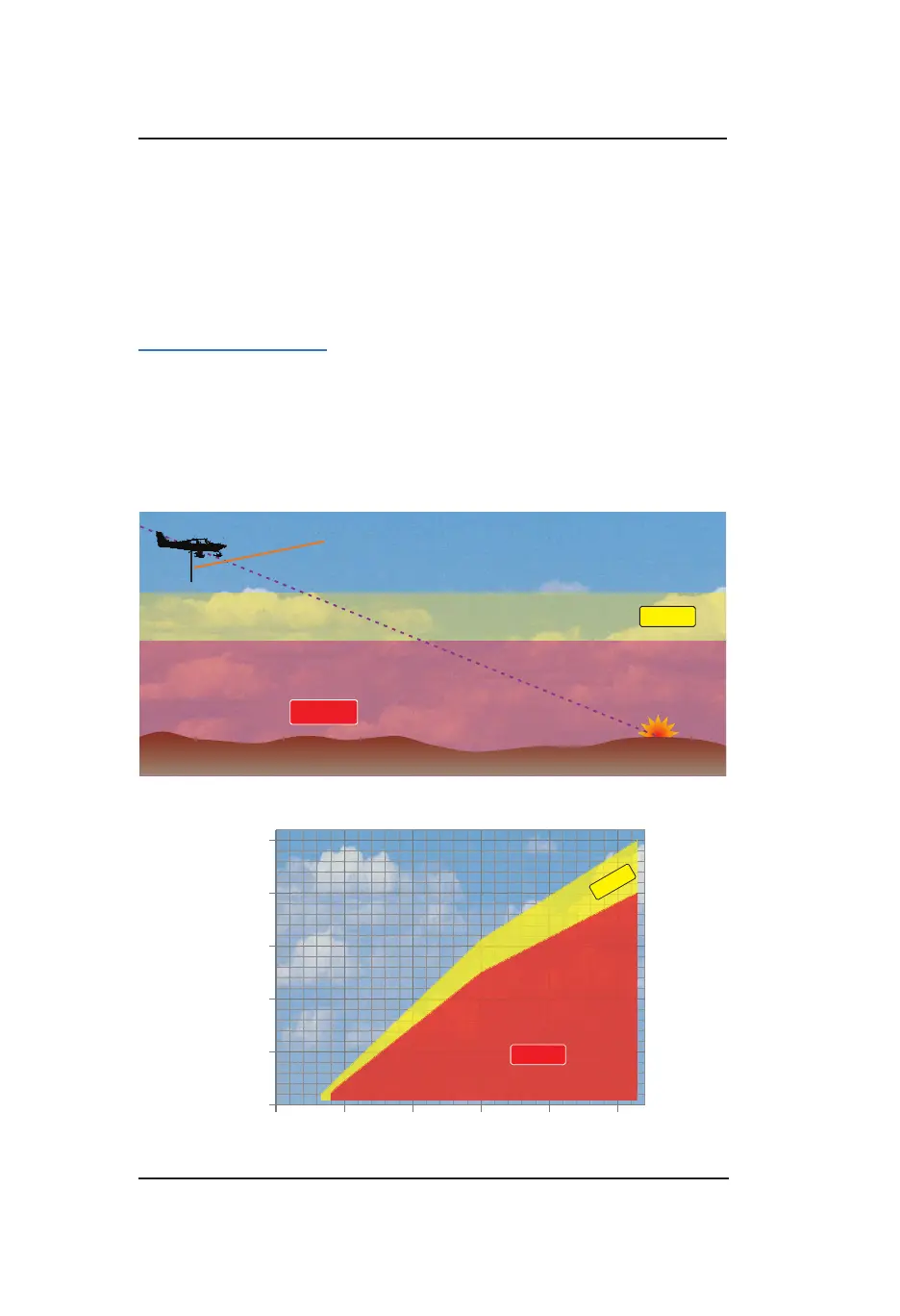Lynx
®
NGT-9000
Pilot’s Guide2-70
Operation - Panel Mount
Ground Proximity Warning System (GPWS) Alerting
The alert and callout conditions for excessive descent rate, negative
climb rate or altitude loss after takeoff, and altitude of 500 ft are
determined by the TAWS function subtracting the terrain elevation
stored in its terrain database from the GPS-based aircraft altitude to
calculate height above terrain.
Excessive Descent Rate
The excessive descent rate alert condition (Figure 2-35), also known
as GPWS Mode 1, occurs when the aircraft is descending too fast for
the aircrafts current height above terrain, regardless of the aircrafts
ap position. More precisely, it’s when your aircraft’s descent rate and
height above terrain fall within the envelopes shown in Figure 2-36.
Figure 2-35: Excessive Descent Rate Alert Condition
Figure 2-36: Excessive Descent Rate Graph
Caution Alert:“Sink Rate!”
Warning Alert:
“Pull up!”
The aircrafts descent rate determines the
height at which alerts begin to occur.
TERRAIN
PULL UP
5,000
4,000
3,000
2,000
1,000
2,000 4,000 6,000 8,000 10,0000
0
Height Above Terrain (ft)
Descent Rate (fpm)
Caution Alert:
“Sink Rate!”
Warning Alert:
“Pull up!”
PULL UP
TERRAI N

